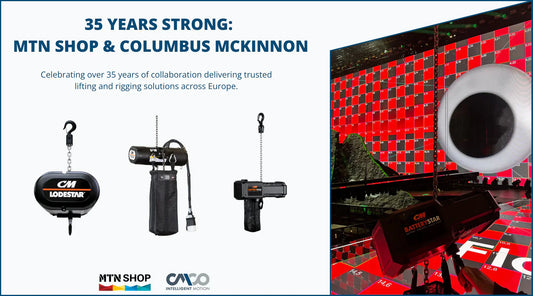IRATA and SPRAT: What's the Difference?
Article
If you’re between a SPRAT and IRATA certification, this post is going break everything down for you so that you understand what one means over the other and how each level of training works within each program.
Both certification programs are dedicated to ensuring that they provide training, methodology, and safety that meets industry standards for rope access. Read on to learn more about which might be best for you!
What is IRATA Certification?
This certification is available through the Industrial Rope Access Trade Association (IRATA) certification. They were formed in the UK in the late 80s’ with the goal of solving maintenance problems within the offshore oil and gas industry. They are comprised of over 200-member companies, and over 40,000 technicians are registered in over 50 countries.
For any level of certification, it’s required that you’re at least 18 years old, but no prior experience is needed to start the program. All levels are valid for three years after you complete training and require that you pass a written test and assessment by an independent IRATA Assessor for the level you are working towards.
IRATA Level I requires that you complete a minimum of a 4-day rope access training course with an IRATA Training Member Company. This training must be supervised by a someone with an IRATA Level III certification.
Level II IRATA certification requires 1,000 hours of work on ropes (hours to be verified by an IRATA logbook, signed by a Level 3 with the Level 3 IRATA number) and 12 months of experience as an IRATA Level I technician before completing another, at minimum, 4-day rope access training course led by an IRATA LEVEL III instructor with an IRATA Training Member Company.

Level III training requires 1,000 hours and 12 months of experience as an IRATA Level II technician (hours to be verified by an IRATA logbook, signed by a Level 3 with the Level 3 IRATA number), holds an appropriate current first aid certificate to show that suitable emergency first aid training has been undertaken, and another, at minimum, 4-day rope access training course with an IRATA Training Member Company led by a IRATA Level III instructor.
To renew your certification, you must complete that four-day training before an assessment is conducted. You will then get another certification reissued for the next three years. If you don’t complete the requirements for a level of training, you can come back after 60 days pass for another assessment. If you are unable to do so within 60 days, you must take the full course again.
On the other hand, if you have a certification but haven’t worked in 6 months, you must take a refresher training through an IRATA International Level III rope access Technician.
This flow chart provides a great visual representation of the qualification process for IRATA certification, and a step-by-step guide to becoming an IRATA technician is available here.
What is SPRAT Certification?
Available through the Society of Professional Rope Access Technicians (SPRAT), this certification is available in three levels. They were formed in the 90s to specifically work with North American rope access technicians as the field was growing in the country at that time. They have thousands of technicians who represent dozens of companies.

Each level of training prepares you for a written exam as well as various skills for beginning or advancing your career. Earning your SPRAT Level I certification requires no prior experience and will train you to work safely on a two-rope system.
Level II of the SPRAT certification training will review the skills learned in Level I as well as teach you some additional skills. This level is open to those who have earned their Level I certification and have completed 500 documented hours of rope access work and have worked as a Level I technician for at least 6 months.
Finally, Level III of SPRAT certification is the highest level attainable and training will not only review skills learned/taught in Level I and II but teaches the most complex skills of the trade. To earn your Level III certification, you must have completed 500 documented hours of rope access work and have worked for at least 6 months as a Level II technician.
Direct entry is available to those who have worked and can prove their experience in rope access so that they can enter directly into Level II or III. You can learn more about the skills taught at each level here.
So, the main difference between the two certifications lies within requirements between levels and who teaches at each level. Anyone can teach a SPRAT class but IRATA teachers must meet certain criteria. Both are reputable programs, but IRATA has world-wide recognition while SPRAT has a strong North American reputation.
You can learn more and compare the two in this great article by the Canadian Rope Access Specialists Inc., which includes a great side-by-side comparison of each level of certification.
No matter which certification you will go for, it is important to ensure you will have the right safety harness and lanyard to not only do the job but to properly protect yourselves in the event of a fall or other incident.Sources:



